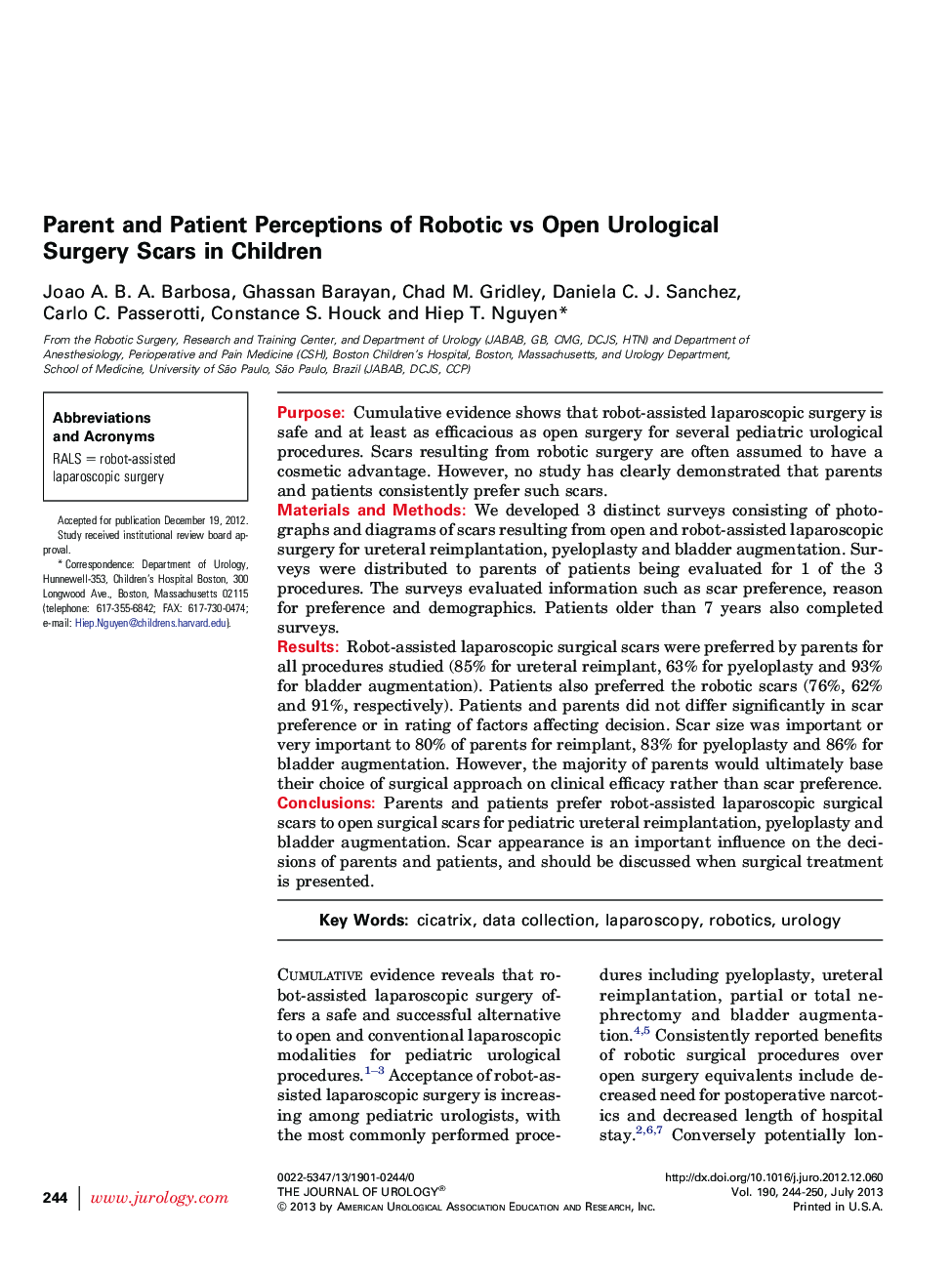| Article ID | Journal | Published Year | Pages | File Type |
|---|---|---|---|---|
| 3866299 | The Journal of Urology | 2013 | 7 Pages |
PurposeCumulative evidence shows that robot-assisted laparoscopic surgery is safe and at least as efficacious as open surgery for several pediatric urological procedures. Scars resulting from robotic surgery are often assumed to have a cosmetic advantage. However, no study has clearly demonstrated that parents and patients consistently prefer such scars.Materials and MethodsWe developed 3 distinct surveys consisting of photographs and diagrams of scars resulting from open and robot-assisted laparoscopic surgery for ureteral reimplantation, pyeloplasty and bladder augmentation. Surveys were distributed to parents of patients being evaluated for 1 of the 3 procedures. The surveys evaluated information such as scar preference, reason for preference and demographics. Patients older than 7 years also completed surveys.ResultsRobot-assisted laparoscopic surgical scars were preferred by parents for all procedures studied (85% for ureteral reimplant, 63% for pyeloplasty and 93% for bladder augmentation). Patients also preferred the robotic scars (76%, 62% and 91%, respectively). Patients and parents did not differ significantly in scar preference or in rating of factors affecting decision. Scar size was important or very important to 80% of parents for reimplant, 83% for pyeloplasty and 86% for bladder augmentation. However, the majority of parents would ultimately base their choice of surgical approach on clinical efficacy rather than scar preference.ConclusionsParents and patients prefer robot-assisted laparoscopic surgical scars to open surgical scars for pediatric ureteral reimplantation, pyeloplasty and bladder augmentation. Scar appearance is an important influence on the decisions of parents and patients, and should be discussed when surgical treatment is presented.
